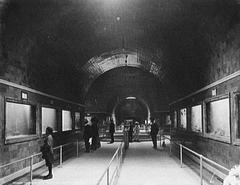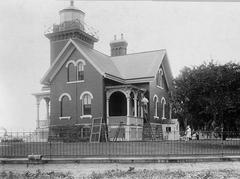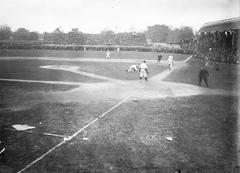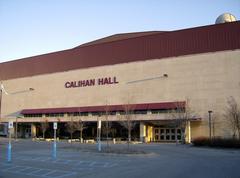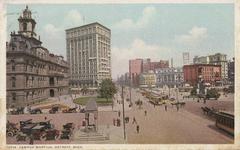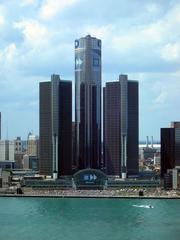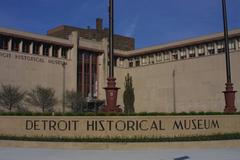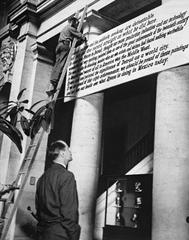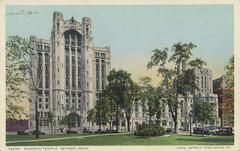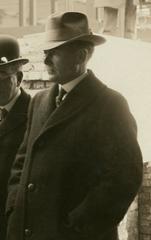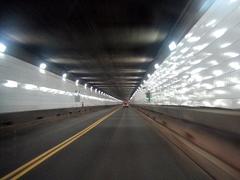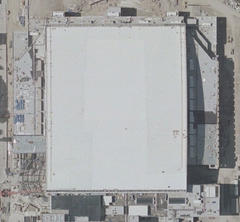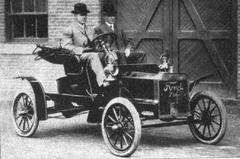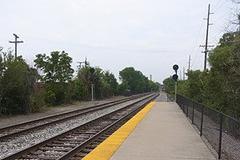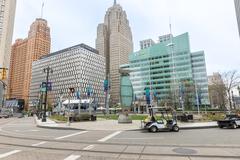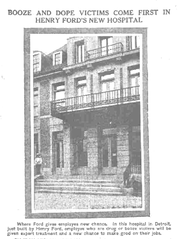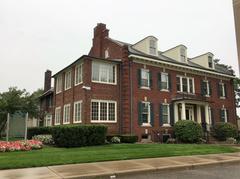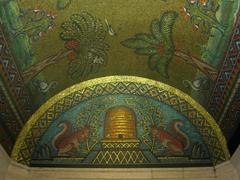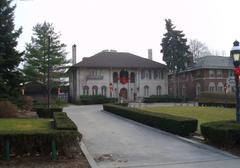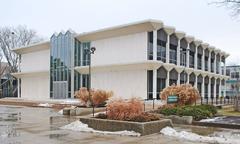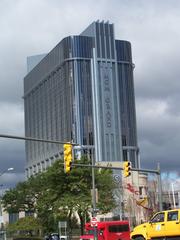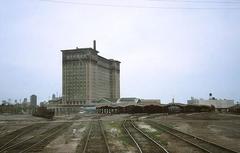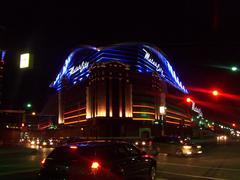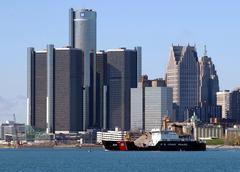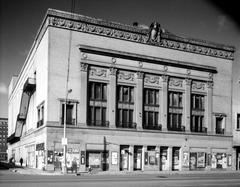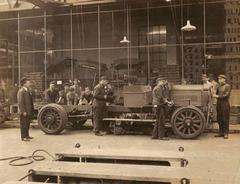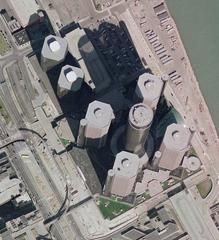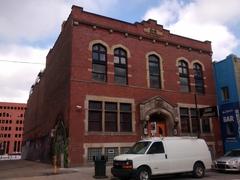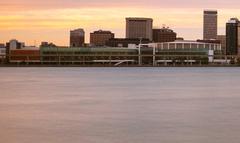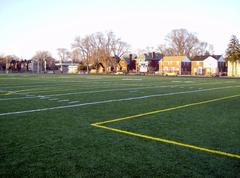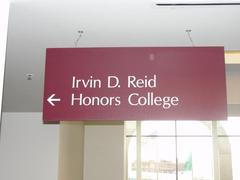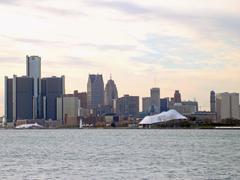
St. Joseph Shrine Detroit: Comprehensive Visiting Guide
Date: 04/07/2025
Introduction
St. Joseph Shrine, located in Detroit’s historic Eastern Market district, is a landmark of faith, artistry, and cultural heritage. Established in 1855 by German immigrants, this Victorian Gothic Revival church is celebrated for its breathtaking architecture, intricate stained glass, and its unique commitment to the Traditional Latin Mass. Today, the shrine stands as both a spiritual home for a vibrant Catholic community and an important piece of Detroit’s historical and architectural fabric (Historic Detroit; Wikipedia).
This guide provides detailed information for visitors, including historical context, architectural highlights, practical visiting details, and tips for making the most of your experience at St. Joseph Shrine.
History of St. Joseph Shrine
Founding and Early Years (1855–1870)
St. Joseph Shrine was founded by German immigrants to serve Detroit’s growing Catholic community. The original structure, a modest wooden church, quickly became a center for both spiritual life and the preservation of cultural traditions. As the congregation expanded, the need for a larger, more permanent building became apparent (Historic Detroit).
Construction and Architectural Achievement (1870–1873)
German-born architect Francis Himpler designed the current structure, completed in 1873, in the style of a southern German “Hallenkirche.” The church’s exterior, constructed from Trenton limestone, features pointed arches, ribbed vaults, and a soaring steeple that, upon completion in 1892, briefly made St. Joseph the tallest building in Detroit (Historic Detroit).
Artistic and Historic Significance
St. Joseph Shrine is renowned for its stained glass—much of it crafted locally by Friedericks and Staffin and by the Mayer of Munich firm in Germany. The exceptional artistry of its windows earned it a place on the National Register of Historic Places in 1972, specifically for this feature (Wikipedia). The interior showcases intricate woodwork, with altars and carvings made both locally and in Germany, preserving the legacy and skills of Detroit’s immigrant artisans (Historic Detroit).
Challenges, Restoration, and Revival
Despite demographic changes and the clustering of parishes in the late 20th century, St. Joseph Shrine remained a beacon of tradition. The church’s historic status was further solidified when its rectory, convent, and Wermers House were added to the National Register in 1992. Significant restorations, especially following a windstorm in 2016 that damaged the steeple, have ensured its preservation for future generations (Yahoo News).
21st-Century Renaissance
In recent years, the shrine has seen a resurgence, fueled by renewed interest in traditional liturgy and historic preservation. The Institute of Christ the King Sovereign Priest now oversees the parish, making it the only personal parish in Detroit dedicated exclusively to the Traditional Latin Mass (Catholic News Agency). An ambitious expansion and restoration project is underway, including the acquisition of adjacent property for community development (Yahoo News).
Architectural and Artistic Highlights
Exterior and Structure
- Victorian Gothic Revival: Designed by Francis Himpler, the church features pointed arches, buttresses, and a limestone façade (Historic Detroit).
- Steeple: The 200-foot spire, completed in 1892, was Detroit’s tallest structure at the time.
Interior Design
- Hallenkirche Layout: The interior follows the German hall church tradition, with a spacious nave and high side aisles.
- Stained Glass: Windows by Mayer of Munich and local artisans depict biblical and historical themes, contributing to the church’s historic designation (Historic Detroit).
- Woodwork: The church boasts the largest collection of handcrafted woodwork in any Detroit Archdiocese church, including altars carved by Anthony Osebold and others (National Catholic Register).
- Pipe Organ: The restored tracker organ enriches the liturgical experience (Historic Detroit).
Cultural Symbols
- St. Joseph the Worker Mural: A prominent mural on Gratiot Avenue, created in collaboration with the local community, visually connects the shrine to Detroit’s working-class heritage (Detroit Catholic).
Liturgical and Community Life
Traditional Latin Mass
St. Joseph Shrine is unique in Detroit for its exclusive dedication to the Traditional Latin Mass, celebrated daily according to the 1962 Roman Missal by the Institute of Christ the King Sovereign Priest (Catholic News Agency). This commitment has made the shrine a focal point for Catholics seeking reverent, traditional worship.
Community and Outreach
The parish offers a welcoming atmosphere, with regular novenas, confessions, and charitable initiatives. Restoration campaigns, community events, and partnerships with local artists and organizations demonstrate the shrine’s ongoing commitment to Detroit’s cultural renewal (Detroit Catholic).
Visitor Information
Location and Access
- Address: 1828 Jay Street, Detroit, MI 48207
- Neighborhood: Eastern Market district, easily accessible by car or public transit.
- Parking: Street parking and nearby lots are available.
Visiting Hours
- Monday–Saturday: 7:00 AM – 7:00 PM
- Sunday: 7:00 AM – 8:00 PM
- Check the official website for updates during feast days or special events.
Tickets and Admission
- Admission: Free. Donations are appreciated to support preservation and ministry.
- Guided Tours: Available by request or during scheduled events. Contact the parish office in advance.
Accessibility
- Wheelchair Access: Ramps and accessible restrooms are available.
- Special Needs: Contact the shrine for specific accommodations.
Dress Code and Etiquette
- Modest attire is encouraged. Men should remove hats; women may wear head coverings, especially during Mass.
- Silence and reverence are appreciated within the sanctuary.
Photography
- Photography is welcome outside of liturgical celebrations. Flash photography and professional shoots require prior permission.
Amenities
- Gift Shop: Open Wednesdays and Saturdays, 11:00 AM to 4:00 PM.
- Restrooms: Available onsite.
Special Events and Pilgrimage
- St. Joseph Day Procession: March 19, with traditional devotions and high attendance.
- Jubilee Year 2025: Special liturgies, processions, and opportunities for plenary indulgence.
- Community Outreach: Cultural events, catechesis, and retreats are offered throughout the year.
Nearby Attractions
- Eastern Market: Historic public market with fresh produce, artisan vendors, and local events.
- Detroit Institute of Arts: A short drive away, featuring world-class art collections.
- Other Historic Churches: Explore Detroit’s rich religious architecture.
- Belle Isle Park: Recreational area nearby.
Frequently Asked Questions (FAQ)
Q: What are the visiting hours of St. Joseph Shrine?
A: Monday–Saturday, 7:00 AM–7:00 PM; Sunday, 7:00 AM–8:00 PM.
Q: Is admission free, and are tickets required?
A: Admission is free; donations are welcome. No tickets required.
Q: Is the shrine accessible for visitors with disabilities?
A: Yes, ramps and accessible restrooms are available.
Q: Can I schedule a guided tour?
A: Yes, group tours can be arranged by contacting the parish office.
Q: Are photos allowed?
A: Photography is permitted outside of liturgies. For professional shoots, obtain advance permission.
Q: How do I get there?
A: Ample street parking is available. Several public bus lines serve the area.
Plan Your Visit
For up-to-date schedules, event details, and to arrange tours, visit the official St. Joseph Shrine website. Download the Audiala app for guided audio tours and follow the shrine’s social media for news and highlights.
The limestone façade and historic steeple of St. Joseph Shrine.
Stained glass windows featuring biblical and historic scenes.
Intricate woodwork and statuary in the sanctuary.
The four-story St. Joseph the Worker mural connects the shrine to the local community.
View St. Joseph Shrine on Google Maps
Find directions and parking options.
Summary and Visitor Tips
St. Joseph Shrine is a treasure of Detroit’s religious and cultural landscape, offering a compelling blend of history, artistry, and spiritual vitality. With free admission, robust accessibility, and a welcoming community, it is an essential stop for anyone interested in Detroit’s heritage. Enhance your visit by planning ahead, exploring nearby attractions, and participating in the shrine’s vibrant liturgical and community life.
References and Further Reading
- Historic Detroit: St. Joseph Oratory
- Wikipedia: St. Joseph Oratory
- Detroit Catholic: St. Joseph the Worker Mural
- Catholic News Agency: Detroit Latin Mass
- Institute of Christ the King Sovereign Priest: Detroit Home
- National Catholic Register: St. Joseph Shrine as Pilgrimage Site
- Detroit Catholic: Jubilee Pilgrimage of Hope
- Yahoo News: Shrine Expansion Plans


